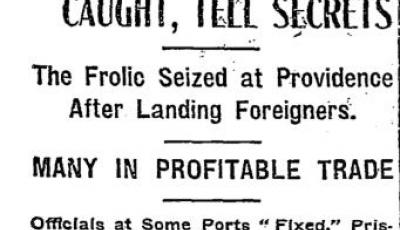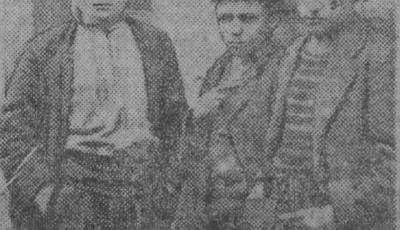Guest post by Fabrice Langrognet, judge in the administrative branch of the French judiciary, and PhD candidate in history and Gates scholar at the University of Cambridge. This post is the third installment of Border Criminologies themed series on Human Smuggling organised by Gabriella Sanchez.
Despite being framed as a recent phenomenon connected to the current hypervisibility of refuge seekers in Europe, human smuggling practices have historically been tied to borders and border crossing regulations and controls. That there isn’t an abundance of references to human smuggling in the European historical record attests to the idea that the criminalization of the practice is a recent phenomenon. Perhaps one of the earliest references involves the case of Eleanore Sullivan―circus acrobat and courtesan extraordinaire—who provided money, counterfeit passports, and logistical planning to help the French royal family escape France in 1791.

In Europe, those involved in the transportation of children to work at the factories, as well as those facilitating the transit of women in the sex trade, also resorted to smuggling tactics to circumvent the mobility restrictions imposed towards the end of the nineteenth century. It was around this time that the French glasswork industry, frustrated by newly enacted laws establishing 14 years as the minimum working age, turned to brokers who could help secure child workers. Minors from nearby countries were most often among those smuggled, as their smugglers were aware that foreign and often fake birth certificates would be less likely to be subject to inspection by the authorities.

Most of these early smuggling efforts were community-based. The smuggling ring of Bernardo and Pasquale Greco in 1900, for example, facilitated the transit of children from Roccadorce, the Grecos’ hometown in Italy. As the economic crisis wiped out the region’s traditional textile business, the Grecos assisted families in the smuggling of their children to France for work. It’s true that the Grecos most likely didn’t act out of benevolence. Indeed, in the early 1890s they had run a local gang, and the transformation of the local economy along with their criminal past gave them the opportunity and the know-how to enter the smuggling business. Bernardo crossed the Franco-Italian border with the children while his father housed them in France and collected their earnings. But the labour of these children, however questionable, allowed for the survival of their impoverished families in communities throughout central Italy.
It’s likely that the activities of the Grecos’ generated some envy among competitors, as an incident involving a severe stabbing by a rival trafficker against Pasquale suggests. But his actions were generally seen as benevolent by the owners of the factories and by the families back in the homeland. It’s also believed that some of the children were related to his own family. By the end of 1900, the smuggling of minors for labour purposes had been taken over by Spaniards, while the Grecos―by then out of a business that had hardly lifted them out of poverty―were perceived as respectable, hard-working glassworkers and decent neighbours.
It’s not known if remorse related to his old smuggling days played a role in Pasquale’s decision to jump to his death in Saint-Denis’ canal in 1922. What is certain from this historical example and others documented by historians of race, class, and labour relations, is that the social contexts of human smugglers weren’t less intricate in the past than they are now in the sense that they responded to the demands of licit labour markets amid state-initiated limitations to mobility. In the rather hyper-represented world of smuggling―and the not less problematic imagery of the current human trafficking or ‘modern-slavery’ rhetoric, within which the story of the Grecos would occupy centre stage—historical records remind us of the continued efforts of the state to protect its interests, and of communities along the margins to secure paths to the most basics of survival.
Any comments about this post? Get in touch with us! Send us an email, or post a comment here or on Facebook. You can also tweet us.
__________
How to cite this blog post (Harvard style):
Langrognet, F. (2015) A Brief History of Smuggling. Available at: https://www.law.ox.ac.uk/research-subject-groups/centre-criminology/centreborder-criminologies/blog/2015/11/brief-history (Accessed [date]).
Share:








